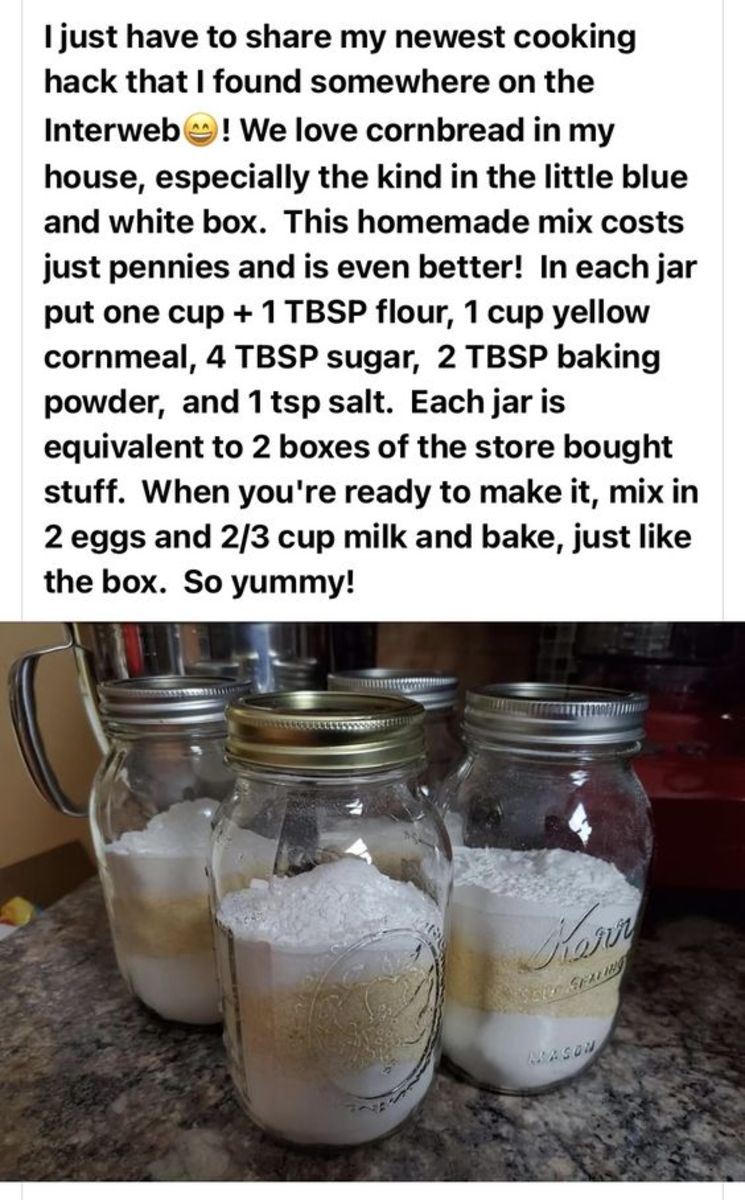How To Sharpen A Knife
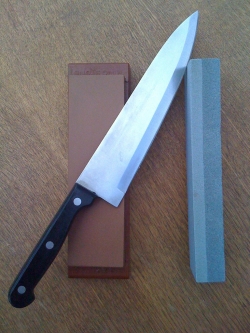
Knives Will Not Stay Sharp Forever....
It is an inevitable fact that knives will not be sharp forever and you will need to know how to sharpen a knife. It really doesn't matter if you have a cleaver, a santoku knife or a pocket knife etc I think it is an essential skill that everyone should know how to do.
A friend told me that it is normally a man's job of sharpening a knife. While I can see the reason behind it, I think everyone should learn how to do it. Of course, there are some pretty easy methods of sharpening that you will discover later on in this lens below.
What you will learn shortly, are knife sharpening techniques that can be used anywhere as long as you have the right tools do the job.
Do You Know How To Sharpen A Knife?
Using A Whetstone To Sharpen Your Knife
How To Sharpen A Knife With a Whetstone?

Tools You Will Need
1) A Whetstone
2) Lubricant
3) Knife
Note that whetstones also mean sharpening stones
About Whetstones
Whetstones are easily available in a hardware store. If you want to look for a suitable whetstone or a sharpening stone, don't get a cheap one but don't get something too expensive either.Buy a sharpening stone that costs about $8 - $10 and it should do the job nicely.
Some people say that you should go for a Professional Diamond Sharpening Stone or a Japanese Sharpening stone but that will cost too much for the home user and it isn't very practical. Any of these two types of sharpening stones may cost you between $20 - $50, which is not worth the money.
Whetstones also have a rough grit and a smoother grit. You must always start with the rough grit to sharpen a dull blade
Instructions
1) To start sharpening, identify the rough grit of your sharpening stone. You can easily tell this by pouring water over it and see if it gets absorbed easier. If that is the case then it is the rough grit. You can also feel the roughter side with your nails or skin. This latter method is probably easier to tell.
2) Pour lubricant (oil ) or water over the sharpening stone. Make sure that it covers the entire surface of the sharpening stone before you begin. Most people would recommend using lubricated oil or honing oil as this reduces friction and prevents warping of your blade. It also helps remove debris from sharpening. If you don't have oil or water, you can still sharpen your knife but bear in mind that the lifespan of your blade is better off with it.
3) Start sharpening your knife by placing it at an angle of approximately 10 - 15 degrees. Some would recommend more but it depends on what you are using your knife for.
4) Sharpen your knife on one side first. Do this for about 10 - 15 strokes before switching over to the next side. Some people may argue that sharpening is best done by sharpening the blade away from the sharpening stone. Others say to sharpen the blade towards the stone. The evidence shows that it really doesn't matter Just do it consistently while applying moderate pressure.
5) Once you are happy sharpening on one side of the blade, switch it to the other side and repeat the above steps.
6) Now do steps (3) - (5) using the fine grit.
The above steps is probably one of the most effective ways of sharpening a knife.
It may not be easy while doing it the first time but once you practice more often, you will get the feel for it and you will be an expert. Another method you can sharpen your knife is to use a knife sharpener. I will discuss about it later on in this lens below.
Types of Whetstones - An Abridged Guide To Whetstones
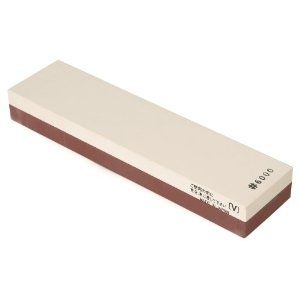
As you may know already, not all whetstones are made equal. They are mainly three types of whetstones:
> Artifical stones
> Japanes whetstones
> Diamon whetstones
The cheapest and most readily available whetstones are made from artifical stones. They are made from bonded abrasives containing aluminum oxide and silicon carbide. You will see these stones having a rougher grit on one side and a finer grit on the other.
Japanese whetstones are more expensive. They are also commonly known as Japanese whetstones. They are softer than artifical stones but much better at sharpening knives than the artificial stones. The Japanese have mastered the art of sharpening for hundreds of years and most chefs used these types of whetstones. These stones are better off with water as oil will reduce its effectiveness when sharpening. It is also far better at sharpening you knife as it exposes new material underneath that does not become loaded with material after sharpening (which commonly occurs with artificial stones).
Diamond whetstones are the most expensive and the least used but unlike the above, they do not need water or oil lubricants to get a sharp edge on your blade.
Best Japanese Waterstone To Sharpen Your Knife
Suehiro Deluxe Japanese Stone
This Suehiro Deluxe Japanese Stone is one of the best waterstones in the market. Being a waterstone means you will get an extremely sharp edge on your knife or tools while polishing it at the same time.
To maximize the potential of this Japanese Waterstone, you will need to:
> Immerse the waterstone in water before using
> Use water while sharpening. NEVER USE OIL
This Japanese sharpening stone may be a little pricey but it is REALLY worth the money.
How To Sharpen A Knife With A Sharpening Steel
How To Use A Knife Sharpening Steel
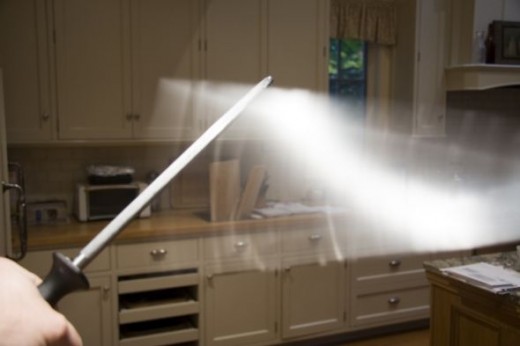
A knife sharpening steel doesn't actually sharpen your knife but instead helps reshapen the edge of a knife so that it is a even as possible. Over time, the wear and tear of usage can cause the sharp edge of a knife to become uneven making it blunt and more difficult to cut through food.
What you see in the picture is someone sharpening a knife with a sharpening steel very quickly. I don't expect you to do it so fast at first but I hope you can understand the steps involved in this process.
Instructions
1) Hold the sharpening steel at 90 degree angle aiming the other end towards a chopping board.
2) Next, hold your knife with your right hand (and left if you are a left-handed person) at 23 degrees against the sharpening steel
3) Now, slowly hold it at that angle at slide the knife from the heel towards the pointed end of your knife as you move downwards. Ensure that you tilt the knife at 23 degrees at all times while you are doing this otherwise you will not straighten the sharp edge properly. Do thi step 10 - 12 times
4) Once you are confident doing this process, repeat it on the other edge of the knife. Do this 10 - 12 times times
5) Now, wash the edge of your knife as they may be fine metal bits that you will not want in your food later on.
6) Wipe your knife with a cloth before using
Tips
> A great tip to remember here is to use a sharpening steel that is at least as long as your knife.
> Practice makes perfect!
Watch How To Sharpen Your Knife With A Sharpening Steel Here
2 Things You Need to Know About the Sharpness Of Your Knife
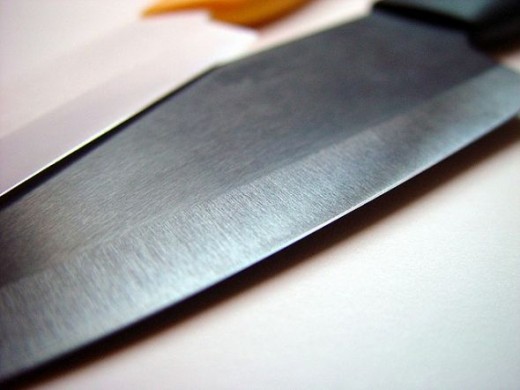
How sharp should a knife be? This is probably a question that almost everyone will ask:
> The sharpness of your knife really depends on what you use your knife for. If you use it for everyday cooking, you won't need a really sharp knife but of course, sharpen it using a rough and fine grit so that it can be used to cut through meat and vegetables.
Of course, you will want a reasonably sharp knife for cooking. If
Is there any other way of getting a sharper knife instead of using the finer grit of a sharpening stone?
> Yes, there is. The smaller the angle of your knife while sharpening it on a stone, the sharper it gets. You can also use an even finer grit to get it real sharp.
If you are sick of sharpening knives, then you may want to consider getting a ceramic knife like this one below:
More Knife Sharpening Techniques
- Knife Sharpening by Steve Bottorff- Sharpening Made Easy
This 5 chapter tutorial will teach you how to sharpen any knife or edged tool to a razor sharp edge. How to sharpen knives, scissors, garden tools and other cutlery. how to select a sharpening system and sharpen a knife to a shaving edge. - Knife Skills: How to Sharpen a Knife | Serious Eats
There is nothing more frustrating in the kitchen than a dull knife. Not only does it make prep work a chore and your finished product less attractive, it's also downright dangerous. A dull blade requires more pressure to cut into... - How to Sharpen a Knife: 10 steps (with pictures) - wikiHow
How to Sharpen a Knife. There are more non-functional knife sharpeners on the market than any other product (with the possible exception of no-effort exercise machines). However, there are plenty of ways to sharpen a knife that do work....
How To Care For Your Kitchen Knives
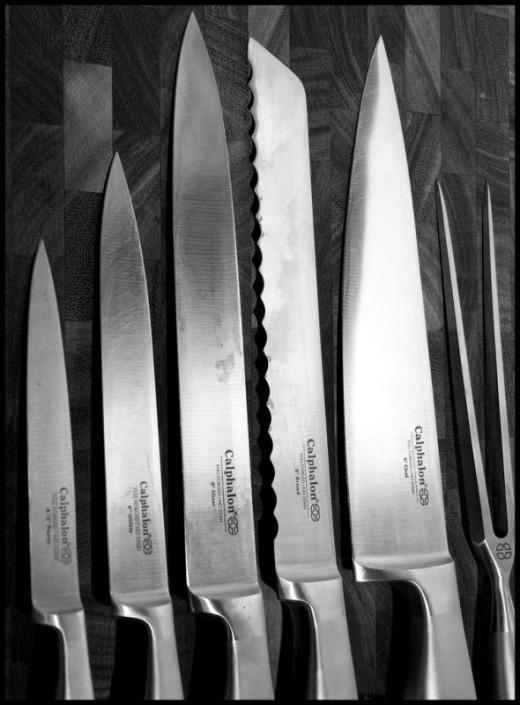
Caring for your kitchen knives is an easy thing to do. Here are some easy steps you that anyone can follow:
Ensure That Your Knives Are Dry
It is important to keep your knives dry to prevent rust. Hence, ensure that you give a good clean wipe after each use. You can also choose to use food grade mineral oil to prevent rusting.
Wash Your Knives After Use
Although most kitchen knives are corrosion resistant, rusting can still occur. Wear and tear and lack of care for your kitchen knives can cause it to rust if food particles or if your knives are not properly washed. Wash them with soap and water and it should be sufficient.
Keep knives in a knife block or in a drawer
The best place to keep knives is in a knife block. Otherwise, if you keep them in a drawer make sure that they rest on a surface that reduces movements. Putting a paper underneath can do the job sometimes.
Be Careful Of The Type of Cutting Board You Are Using
Knives used on glass or ceramic board causes the most damage. Over time, it can cause uneven edges at the sharp end of the knife blade. invest in a good quality chopping board made of either wood or plastic to reduce dulling of your knife blade. These days, there are a lot of cutting boards made from bamboo that won't dull your knife. Below is one example.
Check it out!
Knife Sharpening Tools Such as an Electric Knife Sharpener
can also be used to sharpen knives. Check it out!
Knife Sharpening Tools
Find some of the best knife sharpeners here. Famous brands like FishKars, Presto and Spyderco can be found here.
If you don't want to get your hands dirty and sharpen your knives quickly and easily, these electric and professional knife sharpeners are a must have in your home.





